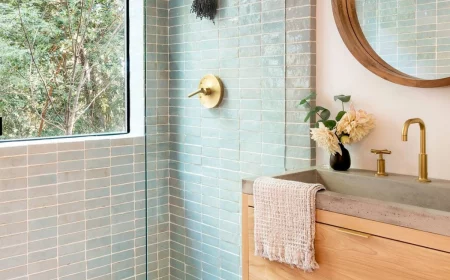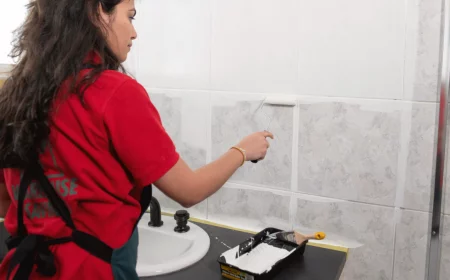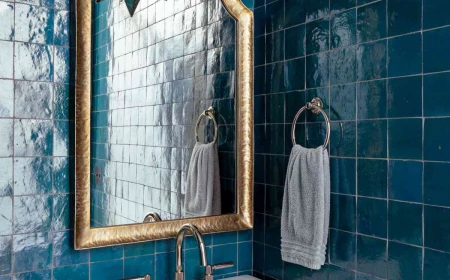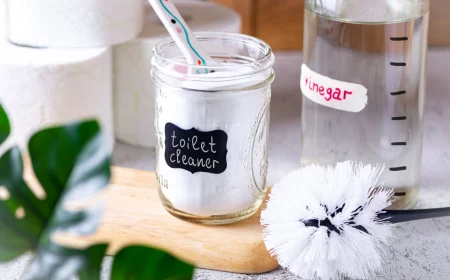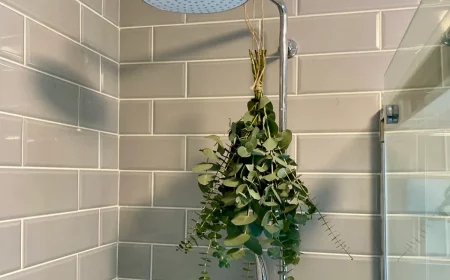What Your Plumber Knows About Shower Baths (That You Really Need To)
I’ve spent more than two decades elbow-deep in bathroom renovations, and I’ve seen every trend you can imagine. But one thing never goes out of style because it’s just so darn practical: the shower bath. It’s the ultimate two-for-one, a perfect solution for families who need a tub for the kids and a quick shower for hectic mornings. It’s also a space-saver in bathrooms where a separate tub and shower just aren’t in the cards.
In this article
But here’s where a lot of people go wrong. They walk into a showroom, see a slick-looking P-shaped or L-shaped tub, and think the decision is made. That’s often the first step toward a bathroom you’ll regret.
A successful shower bath isn’t just a tub; it’s a complete system. It’s about how water flows, how it drains, and—most importantly—how you make the whole setup completely waterproof. I’ve been called out to fix so many jobs where a small shortcut led to rotted floors and collapsing ceilings. And almost every single time, the disaster started with a poor choice or a botched installation. This guide is built on all that experience, the good, the bad, and the leaky. We’re going to cover what really matters: the materials, the installation secrets, and the little details that make a job last for decades instead of just a few years.
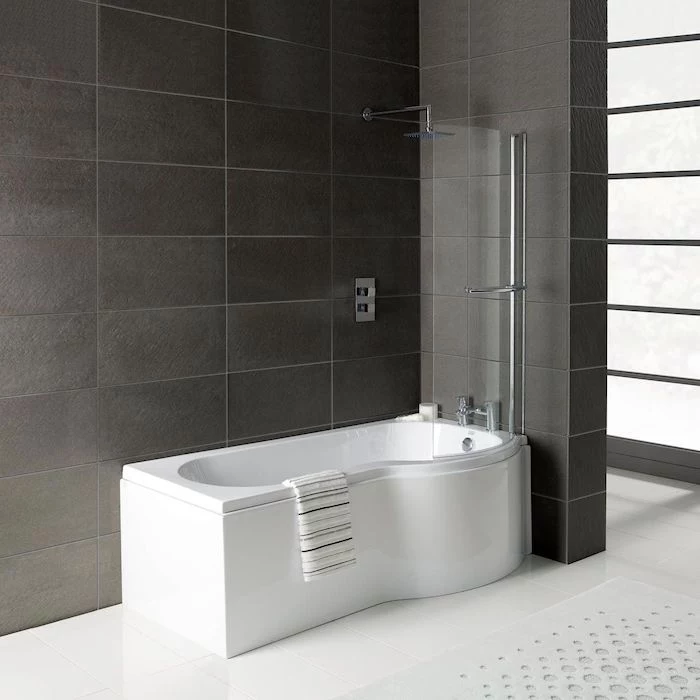
The Stuff You Can’t See: Water, Drains, and Air
Before we even get to the pretty stuff, let’s talk about the science of it all. This isn’t complicated, but respecting these basic principles is what separates a solid, long-lasting bathroom from a moldy mess.
Water Pressure and a Wall of Mist
A tub faucet and a shower head do very different things. Your tub filler is all about volume—it dumps a lot of water quickly. A shower head, on the other hand, is all about velocity. It creates a fine, high-pressure spray that gets absolutely everywhere. That mist is the enemy. It will find any tiny crack or gap in your grout or seals. It also pumps a ton of humidity into the air. A bath makes a little steam, sure, but a 15-minute hot shower can turn your bathroom into a tropical rainforest. That’s why the stuff around the tub is just as critical as the tub itself.
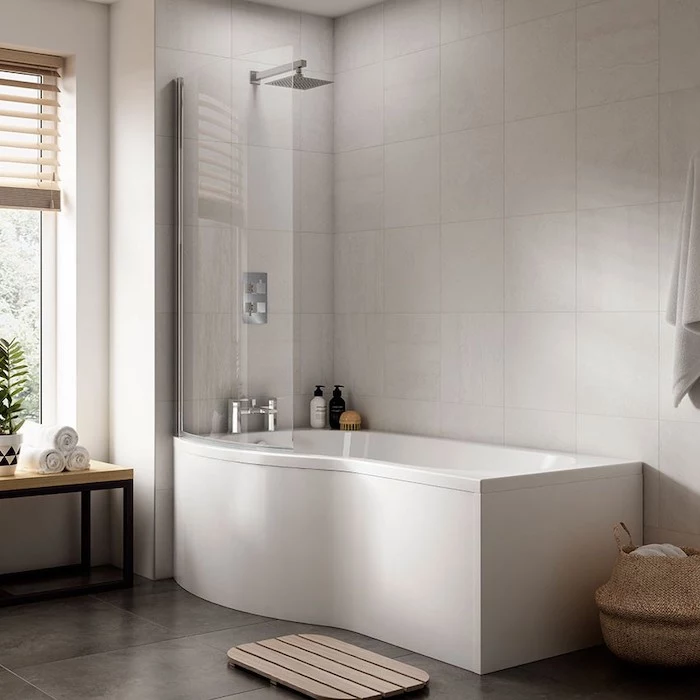
Drains and Fans Are Your Best Friends
Your drain needs to keep up. A standard tub drain is 1.5 inches. For a dedicated shower, most modern plumbing codes actually require a 2-inch drain. While a 1.5-inch drain is often allowed for a combo, I always push for a 2-inch drain if we’re remodeling. It handles hair and soap scum way better and prevents that ankle-deep puddle you get when the water drains too slowly. A slow drain is one of the most common complaints I hear, and it’s almost always a 1.5-inch pipe struggling to keep up.
And then there’s ventilation. Oh man, ventilation. A weak exhaust fan is a direct invitation for mold and mildew. I’ve seen beautiful, expensive tile jobs ruined by black grout because the fan was an afterthought. The rule of thumb is 1 CFM (cubic feet per minute) of fan power for every square foot of floor space. So for an 8×10 bathroom (80 sq ft), you need an 80 CFM fan, minimum. Honestly? I’d go for a 110 CFM. It’s a non-negotiable investment that will run you between $100 and $200 for a good, quiet model. Run it while you shower and for a solid 20 minutes after. It’s the single best thing you can do to protect your investment.
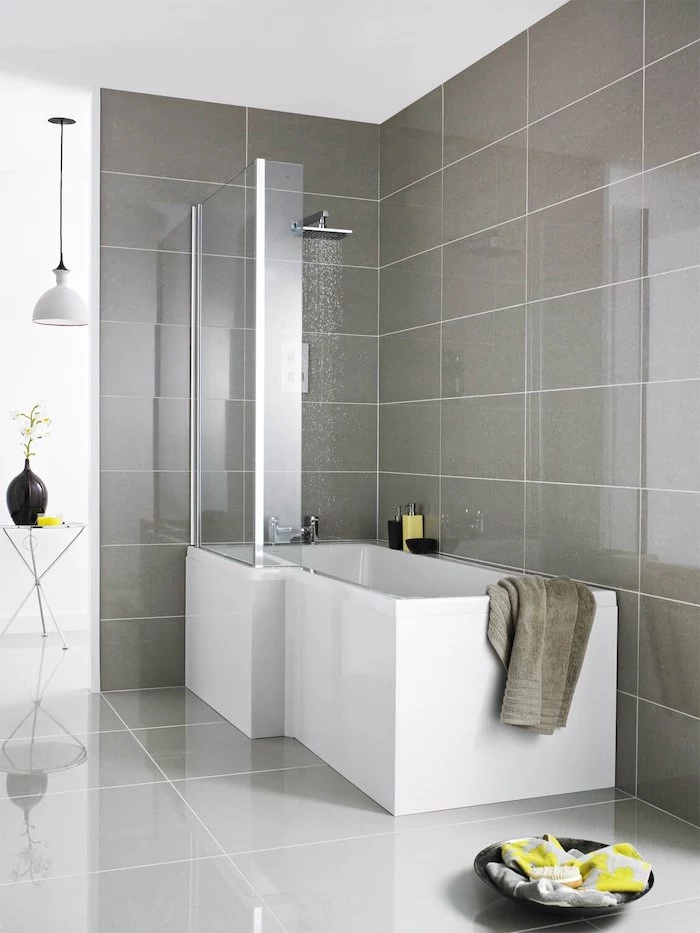
Let’s Talk Tubs: Materials and Shapes
Okay, now for the main event. The tub’s material and shape affect how it feels, how long it lasts, and how tricky it is to install. Here’s the real-world breakdown you won’t get from a sales pitch.
The Lowdown on Tub Materials
Choosing a material is a balance of budget, durability, and what your house can handle. It’s a big decision.
- Acrylic: This is the most popular choice today, and for good reason. It’s a lightweight plastic reinforced with fiberglass, so it’s warm to the touch and easier to get up a flight of stairs. Most decent quality acrylic tubs will cost you somewhere between $400 and $900. Its biggest weakness? Flex. If it’s not supported properly, it will bend slightly when you stand in it, which eventually cracks the silicone seal at the wall—the number one cause of leaks. Pro Tip: Never, ever just set an acrylic tub on its feet. We always lay a bed of mortar (a simple Sand/Topping mix from a big box store, mixed to a thick, peanut-butter consistency) on the subfloor first. We then set the tub right into that wet mix, making sure it’s perfectly level. It makes the tub feel as solid as a rock.
- Enameled Steel: This is a more traditional, budget-friendly option. It’s a stamped sheet of steel with a hard porcelain coating. They feel more rigid than acrylic and are pretty durable, but the enamel can chip if you drop something heavy. And once it’s chipped, the steel underneath will rust. They also feel cold and suck the heat out of your bathwater. For installation, we have to be super careful not to damage the edges. It’s a solid choice if you’re on a tight budget, often available for $250 to $500.
- Cast Iron: This is the heavyweight champion. It’s incredibly durable, rock-solid, and holds bathwater heat like nothing else. The enamel coating is usually much thicker and tougher than on a steel tub. But that quality comes with two big considerations: weight and cost. A standard cast iron tub can weigh over 300 pounds, so getting it into place is a major job. Heads up: You absolutely must confirm your floor joists can handle the weight (the tub, 40+ gallons of water, and you). If you’re not sure, it’s worth the small fee to have a structural engineer take a look. As for price, expect to start around $1,200 and go up from there. It’s an investment, but it could literally last a lifetime.
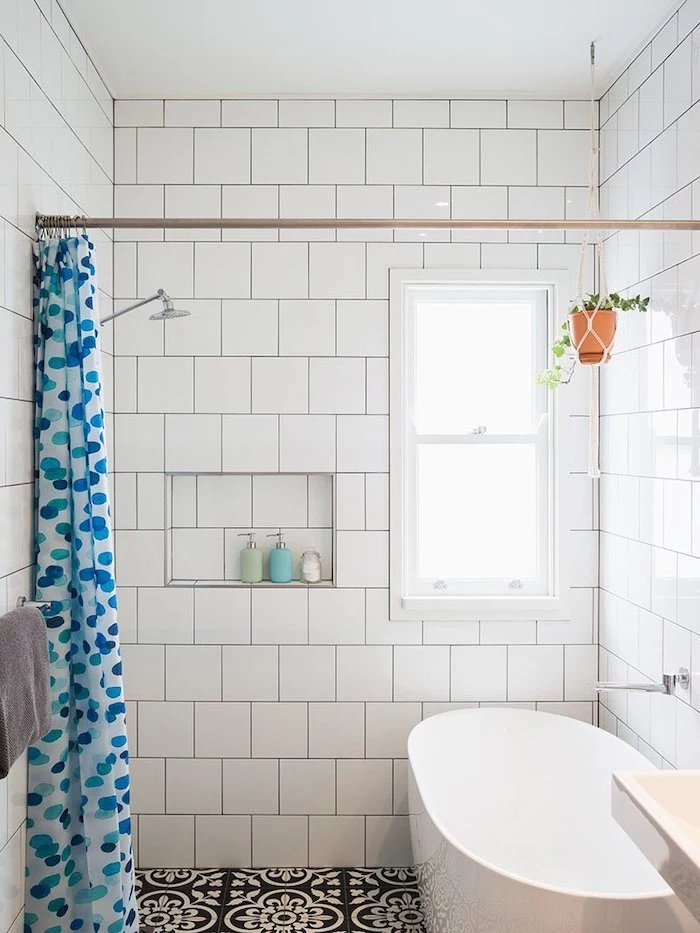
Beyond the Basic Shapes
The shape you choose should be about more than just looks; it’s about how you’ll use the space every single day.
P-shaped and L-shaped tubs are great because they give you extra elbow room for showering. The P-shape’s curve feels spacious, but a heads-up: the curved glass screens are often specific to that one model. If it breaks, finding a replacement can be a nightmare. The L-shape offers similar roominess with straight lines, making it a bit more modern and easier to fit a standard screen to.
But don’t overlook the classic straight tub! A standard 60-inch alcove tub is efficient and affordable. The secret to making it a great shower is choosing one with a wide, flat bottom for stable footing and a good, flat tub deck (the edge) for mounting a glass door. Some tubs have sloped, decorative edges that make getting a waterproof seal for a screen almost impossible. And speaking of screens, you have options. A fixed glass panel can look sleek and modern for around $300-$600. But don’t dismiss a good old-fashioned shower curtain. A high-quality, heavy-gauge fabric curtain on a curved rod gives you tons of room, is easy to clean, and costs less than $100 all-in.
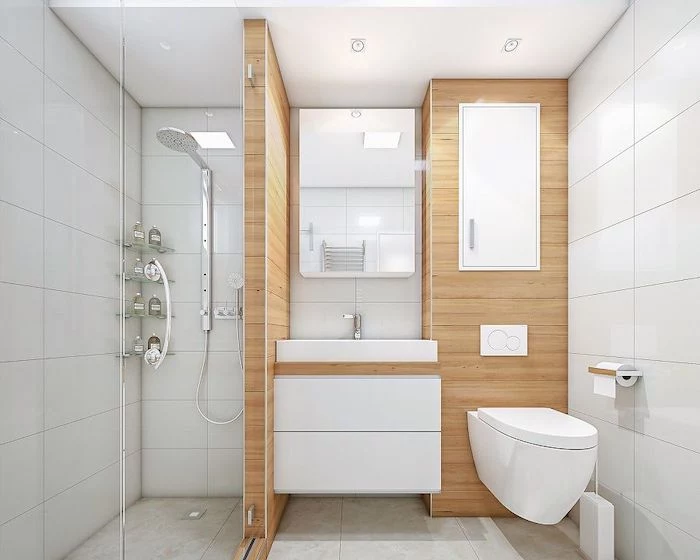
The Big Question: Should You DIY This?
Honestly, for most people, this is a job for a professional. A skilled DIYer who has experience with plumbing and carpentry might be able to tackle a like-for-like replacement. But if you need to move a drain line or water supply pipes? Call a licensed plumber. Period. The risk of a leak is just too high.
So, what should you budget? A straightforward tub swap by a pro will likely take a full day and could cost anywhere from $800 to $2,000 for labor, depending on your location and the complexity. If it’s part of a larger remodel involving new tile and moving pipes, you should plan for the plumbing and installation portion to take 3-5 days.
Final Word: A Quick-Hit List of What Not to Do
If you take anything away from this, let it be this list of common—and costly—mistakes.
- Don’t cheap out on an exhaust fan. It’s your best defense against mold.
- Don’t install an acrylic tub without a mortar bed for support. Just don’t.
- Don’t forget to check if your floor can handle a cast iron tub’s weight.
- Don’t choose a tub with a sloped or narrow edge if you plan to install a glass screen.
- Don’t assume a 1.5-inch drain will be enough. Go for a 2-inch if you possibly can.
Choosing a shower bath is a fantastic way to get the most out of your space. Just be sure to think beyond the showroom and focus on the whole system. A little planning now will save you a world of headaches later. Trust me.

